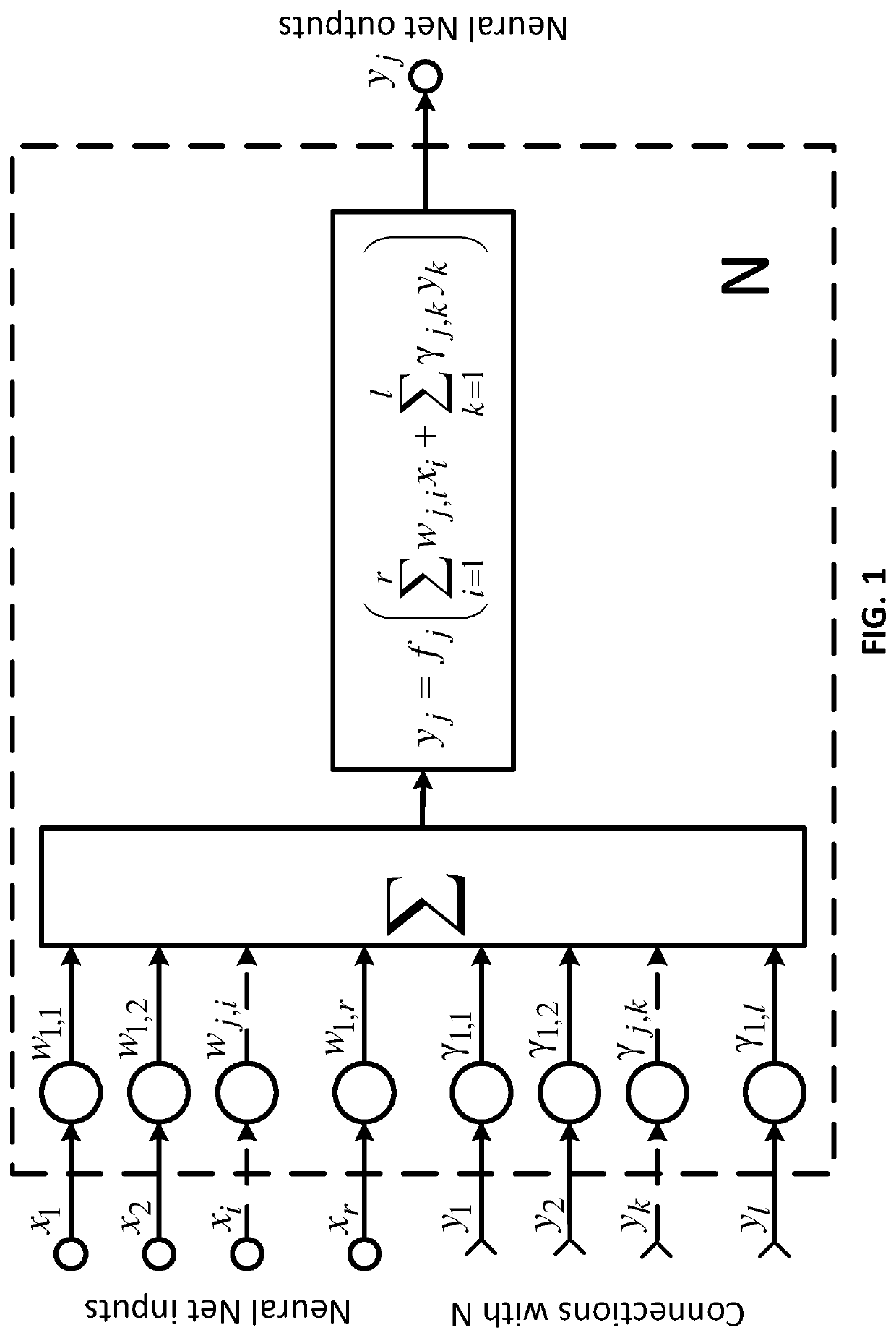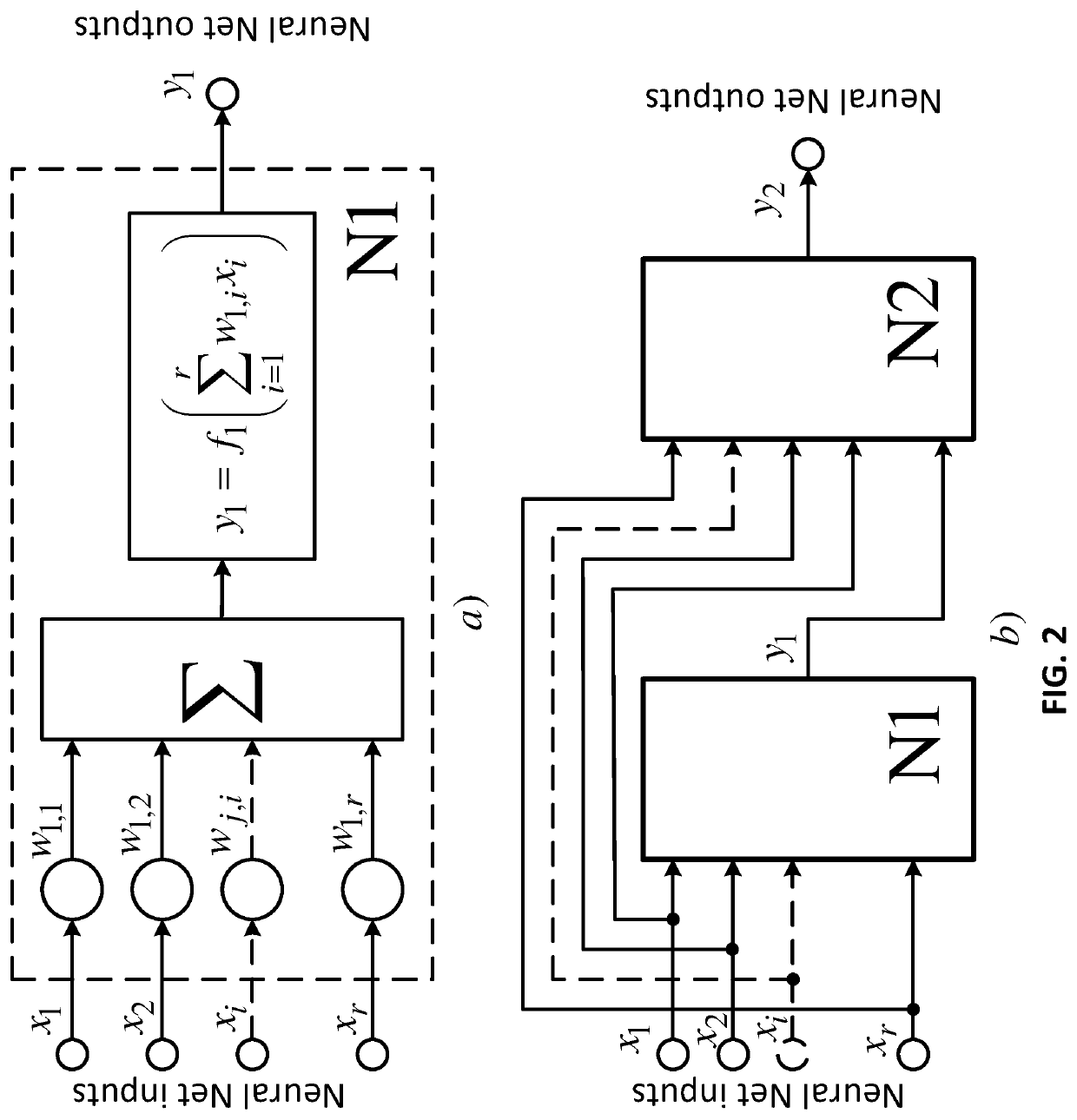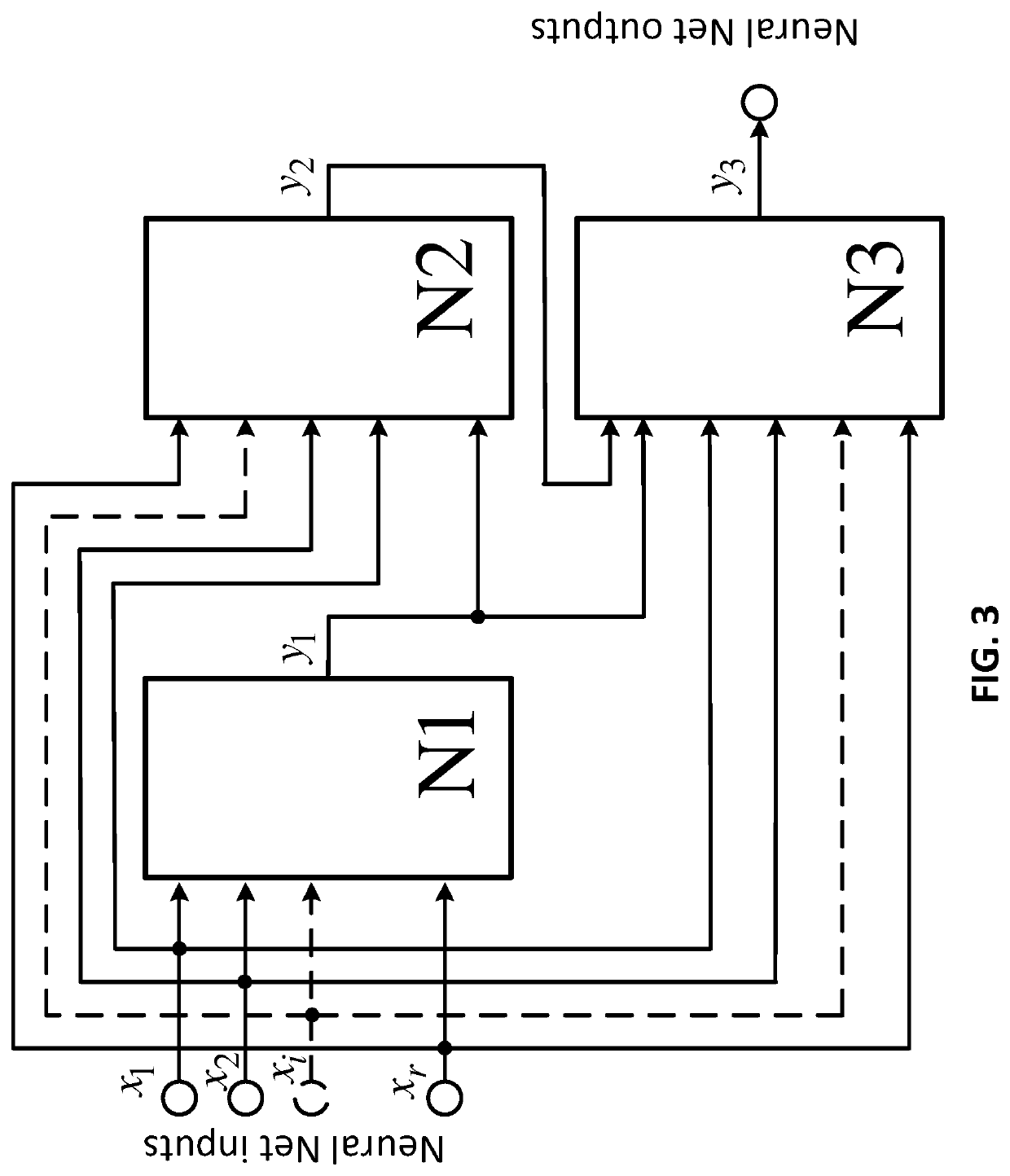Method for training and self-organization of a neural network
a neural network and self-organization technology, applied in the computer field, can solve the problems of limiting the implementation and use of mobile systems, affecting the performance of neural networks, and reducing the classification capability of similar objects, so as to reduce training and operation time, improve performance, and simplify the neural network construction procedure
- Summary
- Abstract
- Description
- Claims
- Application Information
AI Technical Summary
Benefits of technology
Problems solved by technology
Method used
Image
Examples
example 1
[0160]Quality check for a binary classification is performed using the proposed method (named “Neuton” by the inventors) as compared to conventional machine learning methods and libraries (on the example of forecasting the number of the Titanic disaster survivors).
[0161]Operating Data
[0162]The training and model checking are carried out using the data on the passengers of the Titanic in the .CSV format. The target class for forecasting purposes is presented in the Survived column, where 1 means a person did survive, and 0 means a person did not. Additional descriptions for the dataset / task can be found in the corresponding competition details on the Kaggle website.
[0163]The dataset contains 1309 rows and 12 columns. The quality of the machine learning methods has been assessed using cross-validation without shuffling, dividing the entire dataset into five training sets and test samples, where 80% are training sets and 20% are test samples. Also, the resulting sampling sets have unde...
example 2
[0178]Quality check for a multi-class classification using an artificial neural network that has been created and trained with the proposed method (Neuton) as compared to conventional machine learning methods and libraries (on the example of forecasting the ratings of schools in Dubai (UAE) for the 2015 / 2016 academic year).
[0179]Operating Data
[0180]The training and model checking are carried out using the data on 189 schools in the UAE in the .CSV format. The target class for forecasting purposes is presented in the 2015_2016 DCIB Rating column that may contain values ranging from 0 to 5. Also, the dataset contains school ratings from the past years (starting with 2010), along with the number of pupils who entered those schools in the given year, as well as school types and locations.
[0181]The dataset contains 189 rows and 17 columns. The quality of the machine learning methods has been assessed using cross-validation without shuffling, dividing the entire dataset into five training...
example 3
[0195]Quality check for a binary classification is performed using an artificial neural network that has been created and trained with the proposed method (Neuton) as compared to conventional machine learning methods and libraries (on the example of forecasting the probability of company's employees attrition).
[0196]Operating Data
[0197]The training and model checking are carried out using the data on 1470 company employees in the .CSV format. The target class for forecasting purposes is presented in the Attrition column that may contain Yes or No values. Also, the dataset contains data on education, department, the number of missions, the distance between home and office, salary, position, employee's satisfaction, etc.
[0198]The dataset contains 1470 rows and 31 columns. The quality of the machine learning methods has been assessed using cross-validation without shuffling, dividing the entire dataset into five training sets and test samples, where 70% are training sets and 30% are te...
PUM
 Login to View More
Login to View More Abstract
Description
Claims
Application Information
 Login to View More
Login to View More - R&D
- Intellectual Property
- Life Sciences
- Materials
- Tech Scout
- Unparalleled Data Quality
- Higher Quality Content
- 60% Fewer Hallucinations
Browse by: Latest US Patents, China's latest patents, Technical Efficacy Thesaurus, Application Domain, Technology Topic, Popular Technical Reports.
© 2025 PatSnap. All rights reserved.Legal|Privacy policy|Modern Slavery Act Transparency Statement|Sitemap|About US| Contact US: help@patsnap.com



